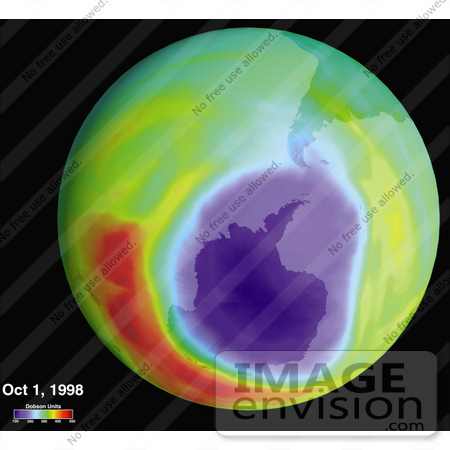

|
Image of a hole in the Ozone Layer. In 1985, a British scientist working in Antarctica discovered a 40 percent loss in the ozone layer over the continent. When Goddard Space Flight Center researchers reviewed their data, they confirmed the ozone loss. Since then, scientists have relied on instrumentation developed by Goddard to keep track of the environmental phenomenon, which in the 1990s prompted a worldwide ban on chlorofluorocarbons (CFCs), a chemical used for refrigeration and other industrial uses. In this image, the blue/purple areas show low ozone, while the red areas indicate higher ozone levels. Although ozone is considered a pollutant in the troposphere the atmospheric layer that contains the air we breathe in higher altitudes, notably in the stratosphere, ozone is considered vital. Stratospheric ozone blocks harmful ultraviolet radiation produced by the Sun. Scientists worry that the large ozone opening over the poles generally deplete ozone levels around the globe, which could cause a health risk to animals and plants. [0003-0612-0812-0424] by 0003
|
Keywords
antarctica, cfc gsfc, earth, earth science, environment, environmental, goddard space flight center, hole in ozone layer, ozone, ozone layer, ozone levels, ozone loss, planet earth, troposphere
|
|












